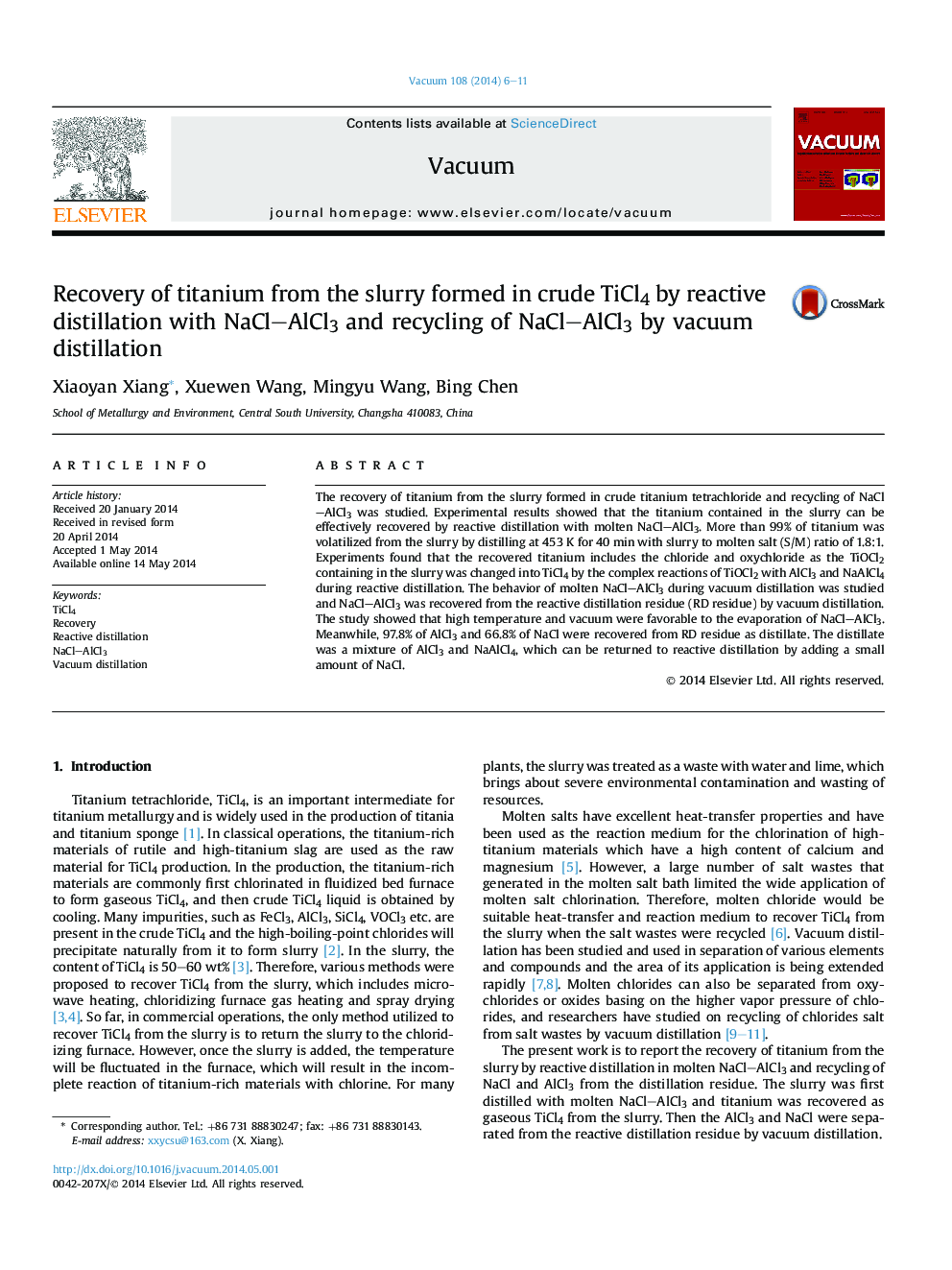| Article ID | Journal | Published Year | Pages | File Type |
|---|---|---|---|---|
| 1689862 | Vacuum | 2014 | 6 Pages |
•Ti was recovered from the slurry formed in crude TiCl4 by reactive distillation.•TiOCl2 was changed into TiCl4 by AlCl3 and NaAlCl4 during reactive distillation.•Ti was completely vaporized by treating at 453 K for 40 min with S/M ratio of 1.8:1.•Molten NaCl–AlCl3 was recycled by vacuum distillation.•97.8% of AlCl3 and 66.8% of NaCl were recovered during vacuum distillation.
The recovery of titanium from the slurry formed in crude titanium tetrachloride and recycling of NaCl–AlCl3 was studied. Experimental results showed that the titanium contained in the slurry can be effectively recovered by reactive distillation with molten NaCl–AlCl3. More than 99% of titanium was volatilized from the slurry by distilling at 453 K for 40 min with slurry to molten salt (S/M) ratio of 1.8:1. Experiments found that the recovered titanium includes the chloride and oxychloride as the TiOCl2 containing in the slurry was changed into TiCl4 by the complex reactions of TiOCl2 with AlCl3 and NaAlCl4 during reactive distillation. The behavior of molten NaCl–AlCl3 during vacuum distillation was studied and NaCl–AlCl3 was recovered from the reactive distillation residue (RD residue) by vacuum distillation. The study showed that high temperature and vacuum were favorable to the evaporation of NaCl–AlCl3. Meanwhile, 97.8% of AlCl3 and 66.8% of NaCl were recovered from RD residue as distillate. The distillate was a mixture of AlCl3 and NaAlCl4, which can be returned to reactive distillation by adding a small amount of NaCl.
